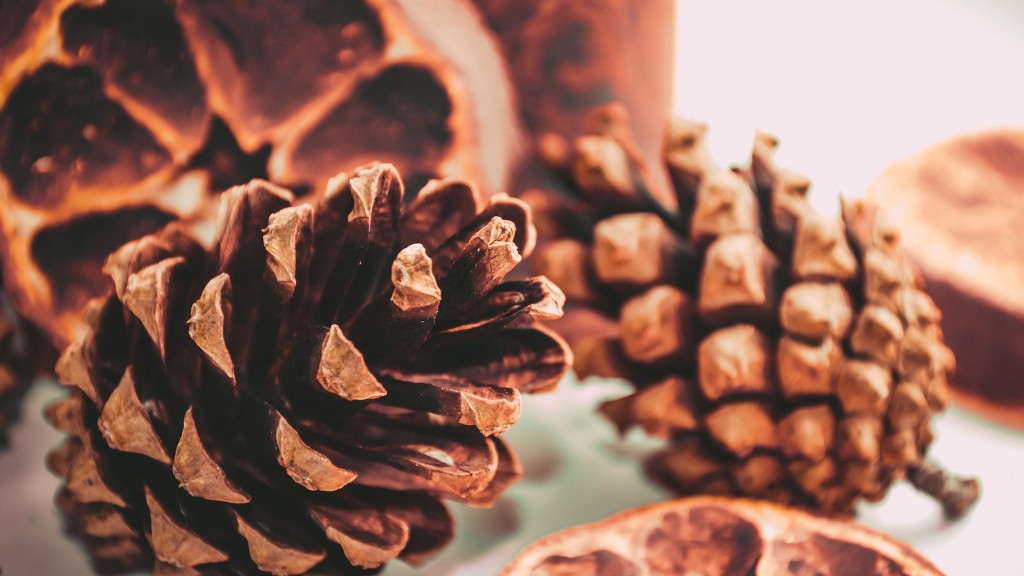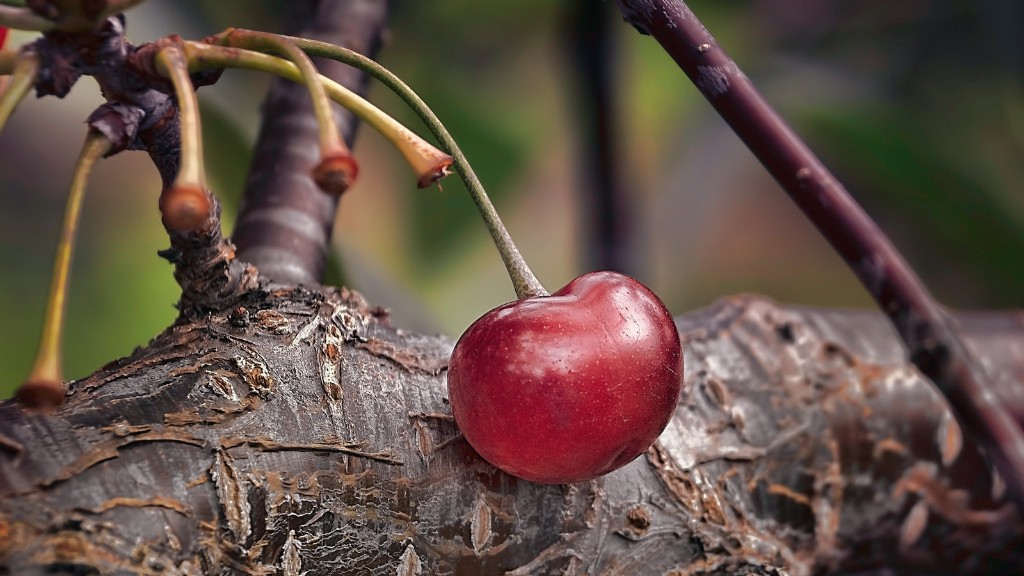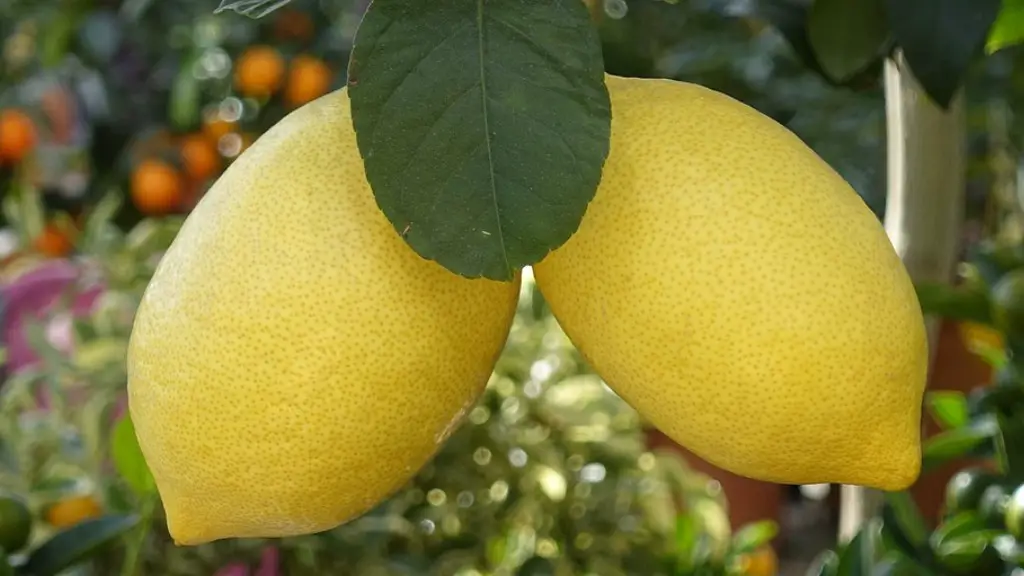The occurrence of yellowing of the leaves of apple trees, scientifically referred to as chlorosis, is a cause for concern for commercial growers and backyard gardeners. The yellowing of apple tree leaves can be caused by a variety of stressors, such as environmental, nutritional, and physiological conditions. To understand why apple tree leaves turn yellow and the consequences of this, it is important to understand the causes and effects of chlorosis.
Environmental stressors, such as extreme heat or cold, drought and excessive sunlight, can cause apple tree leaves to turn yellow. When temperatures become too hot or cold, leaves may not be able to photosynthesize enough to remain healthy. When drought conditions arise,apple trees can suffer from stagnant growth and develop iron chlorosis due to the lack of available iron in the soil. Excessive sunlight can lead to a buildup of temperature and cause apple tree leaves to turn yellow.
Nutritional deficiencies can also be a factor in causing apple tree leaves to turn yellow. When a tree is deficient in nutrients, the production of chlorophyll is slowed and leaves can turn yellow. The most common nutrient deficiency that causes yellowing of leaves is Iron. If leaves are yellow with green veins present, then this is usually a sign of Iron deficiency. Other nutrient deficiencies, such as nitrogen and phosphorus can contribute to yellowing leaves as well.
Physiological issues can also lead to yellowing leaves on apple trees. Trees can become weakened due to disease, pests, or other damage. This can lead to a weakened tree which may be unable to absorb, transport, or retain nutrients. A stressed tree may also be more prone to secondary pests and disease that can further weaken the tree and lead to yellowing leaves.
Apple tree leaves that are turning yellow can be an alarming sight for many growers and gardeners. It is important to understand the different causes and effects of chlorosis in order to identify, prevent and treat yellowing leaves on apple trees. By understanding the various causes and identifying the underlying stressors affecting your tree, an appropriate treatment plan can be implemented to restore health to the tree.
Nutrient Deficiencies and Their Effects
Nutrient deficiencies are one of the major causes of yellowing leaves in apple trees. When a tree is deficient in a nutrient such as iron, the production of chlorophyll slows and leaves can become yellow. Iron deficiency is the most common nutrient deficiency that causes yellowing of leaves with green veins present. Other nutrient deficiencies, such as nitrogen and phosphorus can also cause yellowing leaves.
The effects of nutrient deficiencies can range from minor yellowing of leaves to major problems such as reduced growth, excessive fruit drop and decreased yield. In addition to the yellowing of leaves, nutrient deficiencies can also cause stunted growth, root problems and decreased bud growth. A tree that is suffering from a prolonged nutrient deficiency can become weakened, making it more susceptible to secondary pests and disease.
The key to preventing nutrient deficiencies is to ensure that your apple trees are getting enough of the proper nutrients. This can be done by using a soil analyzer to determine the levels of nutrients in the soil and then making any necessary adjustments. Proper soil pH, watering and fertilizing also play an important role in providing the right amount of nutrients for your tree.
It is also important to recognize the symptoms of nutrient deficiencies. If yellowing leaves are observed on the tree, then this could be a sign of a nutrient deficiency. Other symptoms of nutrient deficiencies include stunted growth, root problems, decreased bud growth and excessive fruit dropping. If any of these symptoms are observed, it is important to have the soil tested and make any necessary adjustments.
Environmental Stressors and Their Effects
Environmental stressors such as extremes in temperature, drought, and excessive sunlight can all cause leaves on apple trees to turn yellow. When temperatures become too hot or cold, leaves will not be able to photosynthesize enough to remain healthy. Drought conditions can also lead to iron chlorosis due to the lack of available iron in the soil. Excessive sunlight can also cause a buildup of temperature in the tree and lead to yellowing leaves.
The effects of environmental stressors on apple trees can range from mild yellowing of leaves to major issues such as reduced growth and reduced yield. When exposed to excessive temperature and drought, trees may be unable to properly photosynthesize, causing the leaves to become yellow and dry. This can lead to decreased growth and decreased yield of fruit. In addition, trees that are exposed to prolonged drought can become more susceptible to secondary pests and disease.
The key to preventing environmental stressors from causing yellowing leaves on your apple tree is to ensure that they are properly cared for in terms of temperature, water, and sunlight. Trees should be planted in a well-drained location that gets plenty of sunlight but is also protected from excessive temperatures. Trees should also be watered regularly, but not over watered. Mulching around the tree can also help to retain moisture and reduce the risk of drought.
It is also important to be aware of the signs of environmental stress. If yellowing leaves are observed, this is typically a sign of excessive temperature or drought. Other signs of environmental stress include wilting, drooping leaves and reduced growth. If any of these symptoms are observed, it is important to take steps to reduce the effects of environmental stress.
Physiological Causes and Effects
In addition to environmental and nutritional stressors, physiological issues can also be a cause of yellowing leaves on apple trees. Trees can become weakened due to disease, pests, or other damage which can lead to a weakened tree which may be unable to absorb, transport, or retain nutrients. A stressed tree may also be more prone to secondary pests and disease that can further weaken the tree and lead to yellowing leaves.
The effects of physiological issues on apple trees can range from minor yellowing of leaves to major issues such as reduced growth and decreased yield. A weakened tree will not be able to photosynthesize properly, causing the leaves to become yellow and dry. This can lead to reduced growth and decreased yield of fruit. In addition, trees that are weakened due to physiological issues can become more susceptible to secondary pests and diseases.
The key to preventing physiological issues from causing yellowing leaves on your apple tree is to ensure that the tree is healthy and vigorous. Keeping your tree healthy can be done by providing proper care such as proper watering, mulching, and pruning. In addition, regular monitoring for signs of disease and pests should be done to ensure the tree stays healthy. If signs of disease or pests are observed, treatment should be implemented as soon as possible.
It is also important to recognize the signs of a weakened tree. If yellowing leaves are observed, this is typically a sign of physiological stress or disease. Other signs of physiological issues include wilting and drooping leaves, reduced growth, and decreased bud growth. If any of these symptoms are observed, it is important to take measures to address underlying issues.
Iron Deficiencies and Their Effects
Iron chlorosis is one of the most common nutrient deficiencies that can cause yellowing leaves on apple trees. Iron is an important nutrient for trees and when it is lacking in the soil, the production of chlorophyll slows and leaves can become yellow. Iron chlorosis can be identified by observing yellow leaves with green veins present.
The effects of iron chlorosis can be wide ranging, from minor yellowing of leaves to major problems such as reduced growth and decreased yield. A tree that is suffering from a prolonged iron deficiency can become weakened, making it more susceptible to secondary pests and disease. In addition, trees with iron chlorosis may suffer from stunted growth, root problems, and decreased bud growth.
The key to preventing iron chlorosis is to ensure that your apple tree is getting enough of the proper nutrients. This can be done by using a soil analyzer to determine the levels of nutrients in the soil and then making any necessary adjustments. Proper soil pH, watering and fertilizing also plays an important role in providing the right amount of nutrients for your tree.
It is also important to recognize the symptoms of iron chlorosis. If yellowing leaves are observed with green veins present, then this is usually a sign of iron deficiency. Other symptoms of iron chlorosis include stunted growth, root problems, and decreased bud growth. If any of these symptoms are observed, it is important to have the soil tested and make any necessary adjustments.





